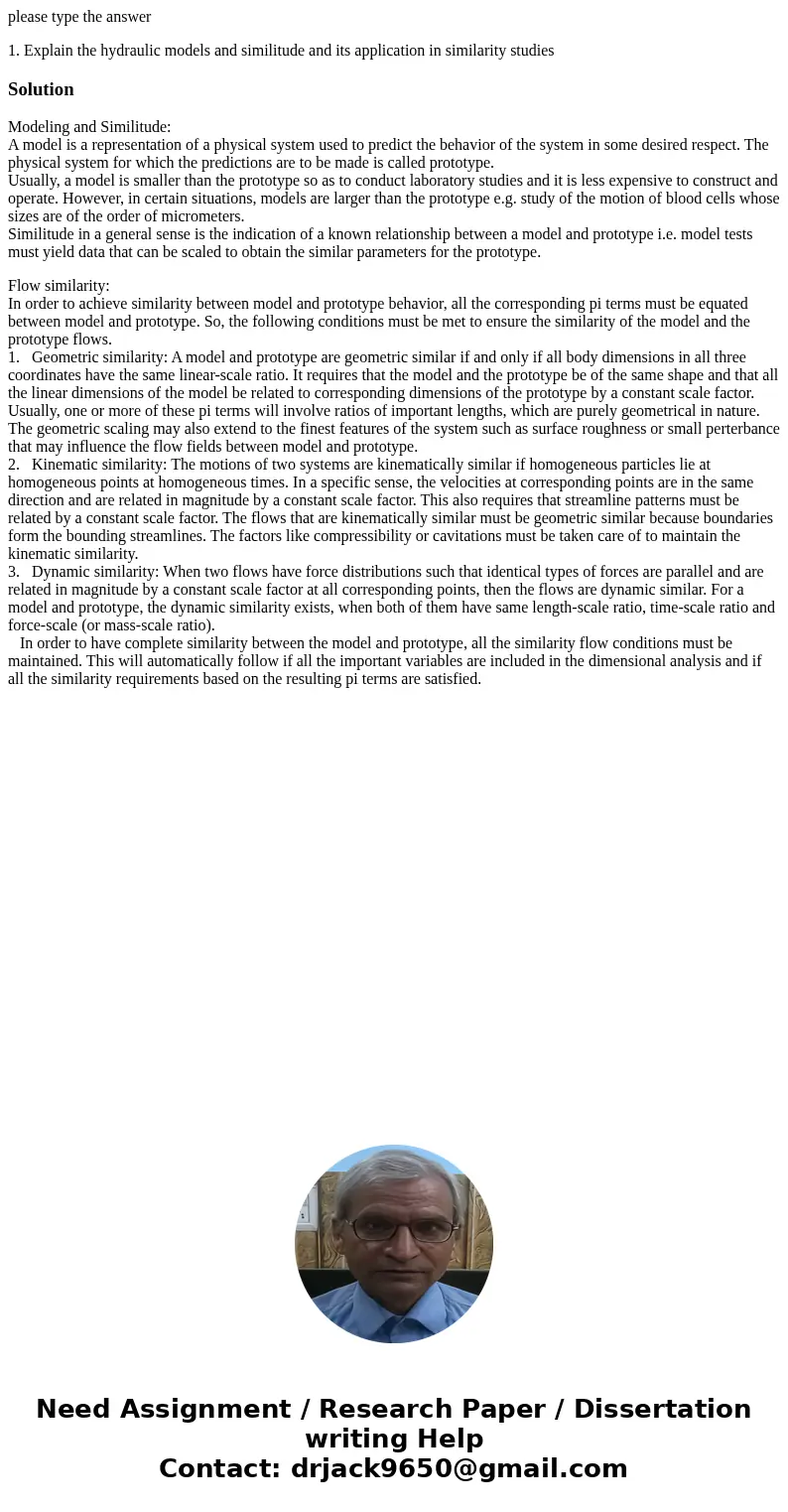please type the answer 1 Explain the hydraulic models and si
please type the answer
1. Explain the hydraulic models and similitude and its application in similarity studiesSolution
Modeling and Similitude:
A model is a representation of a physical system used to predict the behavior of the system in some desired respect. The physical system for which the predictions are to be made is called prototype.
Usually, a model is smaller than the prototype so as to conduct laboratory studies and it is less expensive to construct and operate. However, in certain situations, models are larger than the prototype e.g. study of the motion of blood cells whose sizes are of the order of micrometers.
Similitude in a general sense is the indication of a known relationship between a model and prototype i.e. model tests must yield data that can be scaled to obtain the similar parameters for the prototype.
Flow similarity:
In order to achieve similarity between model and prototype behavior, all the corresponding pi terms must be equated between model and prototype. So, the following conditions must be met to ensure the similarity of the model and the prototype flows.
1. Geometric similarity: A model and prototype are geometric similar if and only if all body dimensions in all three coordinates have the same linear-scale ratio. It requires that the model and the prototype be of the same shape and that all the linear dimensions of the model be related to corresponding dimensions of the prototype by a constant scale factor. Usually, one or more of these pi terms will involve ratios of important lengths, which are purely geometrical in nature. The geometric scaling may also extend to the finest features of the system such as surface roughness or small perterbance that may influence the flow fields between model and prototype.
2. Kinematic similarity: The motions of two systems are kinematically similar if homogeneous particles lie at homogeneous points at homogeneous times. In a specific sense, the velocities at corresponding points are in the same direction and are related in magnitude by a constant scale factor. This also requires that streamline patterns must be related by a constant scale factor. The flows that are kinematically similar must be geometric similar because boundaries form the bounding streamlines. The factors like compressibility or cavitations must be taken care of to maintain the kinematic similarity.
3. Dynamic similarity: When two flows have force distributions such that identical types of forces are parallel and are related in magnitude by a constant scale factor at all corresponding points, then the flows are dynamic similar. For a model and prototype, the dynamic similarity exists, when both of them have same length-scale ratio, time-scale ratio and force-scale (or mass-scale ratio).
In order to have complete similarity between the model and prototype, all the similarity flow conditions must be maintained. This will automatically follow if all the important variables are included in the dimensional analysis and if all the similarity requirements based on the resulting pi terms are satisfied.

 Homework Sourse
Homework Sourse